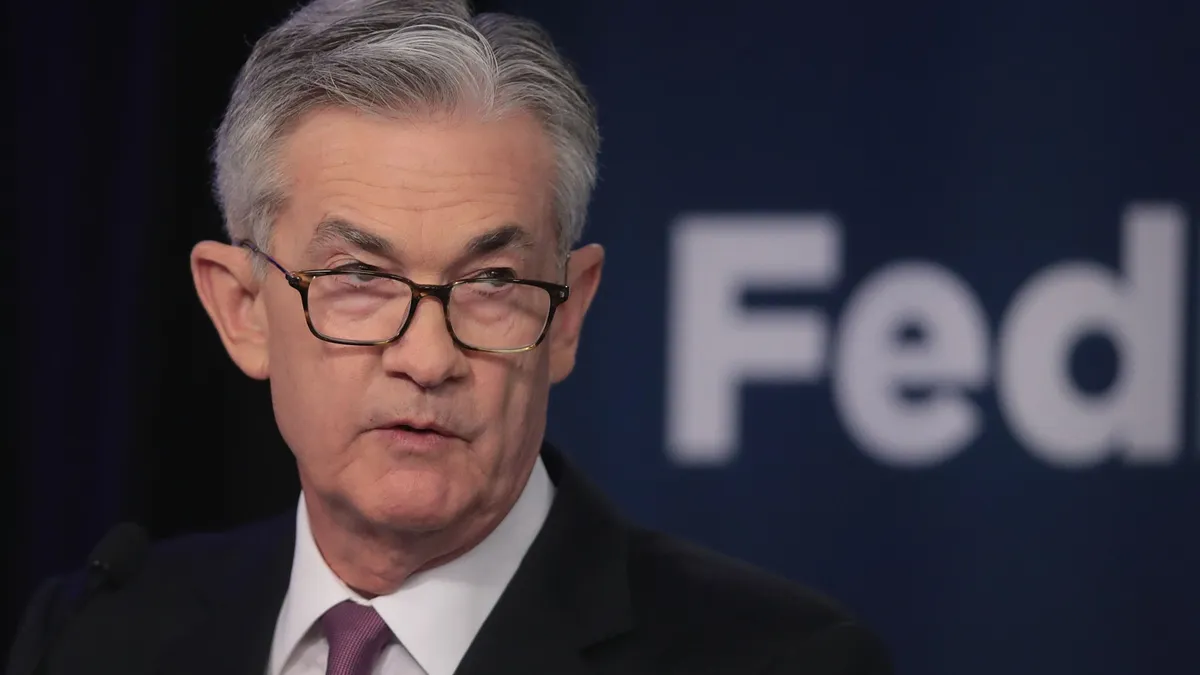Dive Brief:
- Federal Reserve Chair Jerome Powell signaled the central bank’s intent to trim borrowing costs at its September meeting, noting cooling in the labor market and progress in curbing inflation to the Fed’s 2% target.
- “The time has come for policy to adjust,” Powell said Friday, suggesting that policymakers will reduce the federal funds rate at their Sept. 17-18 gathering. “Inflation is now much closer to our objective,” he said.
- In explaining the coming policy shift, Powell said the Fed is focused more on job market health than earlier this year and aims to avert the widespread job loss that often occurs during policy tightening. “We do not seek or welcome further cooling in labor market conditions.”
Dive Insight:
Powell did not indicate the size of a coming interest rate cut, keeping alive a debate among investors and economists on how far policymakers will trim the federal funds rate from its current range between 5.25% and 5.5%.
“The direction of travel is clear,” he said, adding that “the timing and pace of rate cuts will depend on incoming data, the evolving outlook and the balance of risks.”
After Powell spoke, traders in Fed Funds futures set 66% odds that the central bank will trim the main interest rate by a quarter point next month and a 34% probability of a half point cut, according to the CME FedWatch Tool. On Thursday they saw 76% odds of a quarter-point cut and a 24% probability of a half point cut.
Several central bank officials have recently voiced support for a policy easing.
“If you take the level of tightness that the Fed has set — Fed Funds minus inflation — that’s as high as it’s been in decades,” Chicago Fed President Austan Goolsbee said after Powell’s speech.
“You only want to be that tight on purpose if you’re trying to cool an overheating economy, and this is not overheating,” he told CNBC.
“We want to be careful, as Chair Powell said, about the employment side of the mandate too. We’re not just fighting inflation now — inflation is on a path to 2%,” Goolsbee said.
The personal consumption expenditures price index during the 12 months through June rose 2.5% and probably remained at that level last month, Powell said at a gathering of central bankers in Jackson Hole, Wyoming.
“Several” Fed officials saw an argument for reducing borrowing costs at their most recent gathering on July 30-31, according to minutes of the meeting released Wednesday.
“The vast majority” of meeting participants indicated that, if price pressures continued as anticipated, “it would likely be appropriate to ease policy at their next meeting” in September, according to the meeting minutes.
Since early 2022 policymakers have made uneven progress in curbing inflation from the highest level in four decades to their target. The consumer price index rose last month at a 2.9% annual rate — a three-year low.
“The numbers are starting to move in a direction which suggests that our policy has its effect, and we can start the pathway to restore it back to a normal policy posture,” Atlanta Fed President Raphael Bostic said Friday.
“We can’t wait until it’s at 2% itself to start moving,” he told CNBC before Powell spoke, noting the job market is not in headlong decline.
“We don’t have a crisis in labor markets,” he said. “The way I describe them is they’re weakening, but they’re not weak.”
The jobless rate rose last month to 4.3% from 4.1% in June, and payrolls expanded only 114,000, below forecasts and the lowest monthly increase this year.
At the same time, Bostic said policymakers cannot declare victory in their fight against inflation.
“If you look at where inflation is, it is not particularly close to our targets,” he said. “We have an underlying inflation dashboard on our website, right? It’s all flashing red still.”
Goolsbee also pointed to “warning lights,” flagging consumer delinquency rates, small business defaults and parts of the job market. “On the other hand, we also have wide pockets of strength in the economy.”















